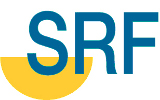Sponsors
Information for Sponsors and Exhibitors
For detailed information about sponsorship opportunities please refer to the sponsorship brochureIt is with great excitement that we invite your company to participate in the 14th Congress of the European Society for Photobiology 2011 as an exhibitor at this global event. The Congress will be an important forum for dissemination of new knowledge in the range of photobiological fields of research, for scientific discussions and for planning of your future research. Furthermore, in 2011 we celebrate our 25th anniversary.
The 14th Congress of the European Society for Photobiology will be held September 1-6 2011 in Geneva. Geneva is situated in some of Europe’s most beautiful scenery, between lake and mountains. In the very heart of Europe, Geneva has been a cultural center for many centuries and home to many creative spirits in the fields of science and art. It has all the advantages of a small city combined with the facilities and services usually only found in much larger cities. It is Europe’s most international city with some 44 % of its inhabitants not of Swiss nationality. The city remains open to people of different origins and cultures. The Congress centre is located close to the beautiful and lively old town with many restaurants and a range of other activities. Geneva has an international airport offering direct regular flights including those from many low cost companies to nearly 90 international destinations.
Organizers from this well-recognized society are working together to create a comprehensive program which integrates developments in biophotonics with applications for drug development, basic science investigations, and clinical translation. The result? An ideal forum, assembling the opinion leaders top minds in the field of photobiology, photochemistry, and photomedicine today, in one location.
Industry exhibits will include the latest advances in pre-clinical and clinical imaging applications to create a "one-stop" biophotonics educational technology showcase. The ESP will bring together technically distinct and separate research communities that have a shared scientific vision. We expect the attendance for the 14th Congress of the European Society for Photobiology 2011 to exceed 500 participants from across the globe.
You should not miss this one-of-a-kind opportunity to communicate your company’s message directly to your targeted audiences. We have developed a comprehensive website to keep you and the conference’s attendees informed of the many facets of this exciting event. Last year, our website received over 250,000 hits in anticipation of the conference’s opening, a fantastic way for our sponsors to be noticed.
Thank you for your consideration and welcome to the Congress of the European Society for Photobiology. We look forward to your support.
Sincerely yours,
ESP Organizing Committee Members
| Miguel Miranda (Spain) ESP President |
Francesco Ghetti (Italy) ESP Treasurer |
| Kristian Berg (Norway) ESP Past President |
Evelyne Sage (France) ESP President Elect |
| Lesley Rhodes (UK) ESP Honorary Secretary |
Piotr Ziółkowsky (Poland) Local Chairman of 2009 Congress |
| Norbert Lange (Switzerland) Local Chairman |
|
About the ESP
The primary aims of the Society are to co-ordinate and promote all aspects of photobiology in Europe in a way which will optimise the achievements of European photobiology across a range of scientific, technological and medical arenas. Such developments include liaison with and encouragement of photobiologists in other parts of the world. These aims are achieved through publication of a peer-reviewed journal, Photochemical & Photobiological Sciences (PPS), the organisation of a biennial Congress, the holding of regional meetings within Europe, and providing support for meetings outside Europe. Educational opportunities for younger scientists form an important part of the Society’s activities and include workshops, exchange study visits between research institutions and scholarship opportunities for attending conferences. ESP is also working towards the establishment of European Union PhD programmes. The latest creation of the ESP is a Photobiology School launched in 2009 which has been inaugurated in June 2010 in Brixen, Italy, with great success.
The European Society for Photobiology offers many opportunities for companies interested in reaching the most qualified prospects in the dynamic, interdisciplinary field of Photobiology.
The Society is one of the world's largest membership organization for photobiologists. Among its members are the most prominent, well-funded research scientists in industry, university, private, and government laboratories worldwide.
In order to make ESP accessible to all interested photobiologists, there has been increased focus on the dissemination of information through the setting up of a dedicated website (which will also function as the website for the biennial congresses and other activities), and publication of books and other materials. ESP also wishes to continue to promote joint activities between relevant societies in the form of co-hosting of symposia speakers at congresses in order to promote cross-society contact and collaboration.
The ESP 2011’s Programee at a Glance
Molecular imaging in translational research
UV-induced DNA damage, repair, mutagenesis and carcinogenesis
Sunlight exposure, sunbeds and vitamin D
Photobiology and environment
Environmental applications of photosynthetic organisms
Cell signalling by solar radiation (UV, VIS and IR)
Molecular and cellular aspects of PDT
Photosensitization - Biophysical, photophysical and spectroscopic aspects
New drugs and drug delivery for PDT
PDT to treat microbial infections
Photostability, photochemistry and phototoxicity of drugs
Systemic photoprotection
Photomorphogenesis
Photoimmunology
UVA and oxidative stress
Plant photobiology and climate change
Topical sunscreens: assessment of efficacy and impact
The impact of climatic and environmental factors on personal UV radiation exposure and human health
Nanotechnology: from photochemistry to photomedicine
PDT and vascular targeting
PDT for skin cancer
Photoaging - mechanisms and reversal
Research insights in the photosensitivity disorders
State of the art of phototherapy
Photobiology at Work
Photobiology is the scientific study of the interactions of light (technically, non-ionizing radiation) and living organisms. It is broadly defined to include all biological phenomena involving non-ionizing radiation. The goals of photobiology are the understanding of the basic mechanisms of photobiology; this knowledge can then be used to:
- Develop ways to control the beneficial effects of light upon our environment;
- Promote ways to protect against the detrimental effects of light on biological organisms, including humans;
- Develop photochemical tools and techniques for use in research, medicine, and industry.
Photobiologists work in a wide range of research areas including: Photochemistry, Photophysics, Photosensitisation, Photosynthesis, Photoconversion, Photomorphogenesis, Photosensory Biology, Environmental Photobiology, Chronobiology, Photoprotection, Phototoxicity, Vision, Photomedicine, DNA Damage and Repair, Photocarcinogenesis, Phototherapy, PhotoDynamic Therapy, Photodermatology, Photoimmunology.
Due to the multifaceted character of research in photobiology scientists and physicians
in this area have interest in a multitude of devices, medical equipment, scientific
literature and software. In general, participants will be attracted in instrumentation
related to:
radiation transmission and radiation measurements
UV and visible light sources,
lasers, monochromators, filters,
fibre optics, radiometers,
photoprotective medicines,
sunscreens,
sunglasses,
microscopy,
imaging,
as well as scientific literature, general laboratory and medical equipment, and software.
How We Market the Congress
Enthusiasm for the ESP has been growing throughout the field as word of the meeting continues to appear in numerous scientific journals and other venues, reaching thousands of basic scientists, radiologists, industrial scientists, dermatologists, nuclear medicine physicians, oncologists, neurologists and cardiologists, amongst others. Here is a sample list of how we market the show to draw in those select decision-makers.
Tradeshows/Scientific Conferences
ESP has been promoting the conference at these tradeshows/scientific conferences:
Multiple Ads in Scientific Journals
ESP is also advertising in related scientific journals such as Dermatology, Photobiology,
Photochemistry, Photomedicine, Cancer, Diagnostic Imaging, as well as our journal,
Photochemical Photobiological Sciences.
Public Relations
We maintain an active media contact listing of well over 100 names from newspaper dailies,
industry trade publications and news magazines. Media contacts are targeted for customized
outreach efforts in order to secure their on-site attendance. Press releases go out on a
regular basis as the program evolves and new information on keynote speakers, program
sessions and topics are finalized. Media messages are sent out closer to the actual
conference event dates.
Conference Promotion
The conference is listed under the "Meetings and Conferences"” section of numerous
professional societies' websites of major Photobiology Societies, the Royal Society of
Chemistry, the American Society of Chemistry, the European Platform for Photodynamic Medicine,
Oncology and Dermatology Societies, the Society of Porphyrins and Phthalocyanines,
and the International Photodynamic Association, to name just a few, as well as on
commercial websites.
More Information:
For more information about sponsorship opportunities please refer to our sponsorship brochure or contact:
Norbert Lange
(Local Chair)
University of Geneva
School of Pharmaceutical Sciences
30, Quai Ernest Ansermet
CH-1211 Geneva, Switzerland
Tel: +41 22 379 3335
Fax: +41 22 379 6567
e-mail: norbert.lange@unige.ch
Miguel Angel Miranda Alonso
(ESP President)
University of Valencia
Department of Chemistry
Av. Naranjos s/n
E-46022 Valencia, Spain
Tel: + 34 96 3877807
Fax: + 34 96 3877809
e-mail: mmiranda@qim.upv.es
Lesley Rhodes
(ESP Secretary and Chair of the ESP Sponsorship Workgroup)
School of Translational Medicine
University of Manchester
Salford Royal NHS Foundation Trust
Manchester Academic Health Science Centre Manchester M6 8HD, UK
Tel: + 44 161 206 1128/1150
Fax: + 44 161 206 1156
e-mail: lesley.e.rhodes@manchester.ac.uk
Paolo Giacomoni
(Member ESP Sponsorship Workgroup)
Executive Director
Estee Lauder Research Park
125, Pinelawn Road
Melville, NY 11747, US
Tel: +1 631 531 1238
e-mail: pgiacomo@Estee.com
Angelika Rück
(Member ESP Sponsorship Workgroup)
ILM
Helmholtzstrasse 12
D-89081 Ulm, Germany
Tel: +49 731 142916
e-mail: angelika.rueck@ilm.uni-ulm.de

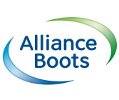







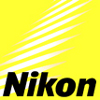


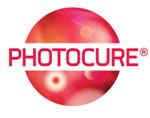
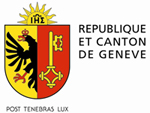
, Basel, CH.png)
